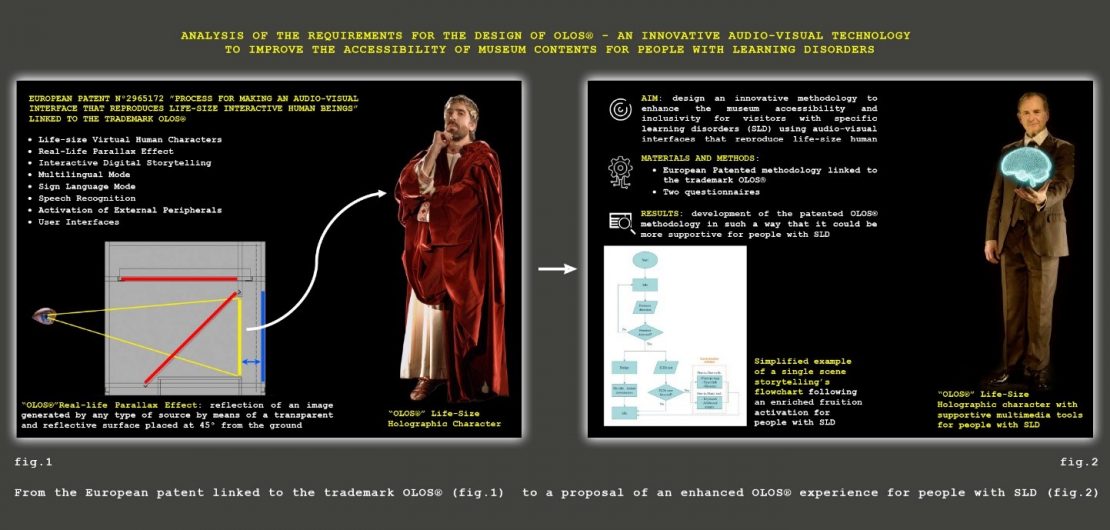 News
News
Which Are the Needs of People with Learning Disorders…
A new scientific paper [1] is published in collaboration between the University of Tuscia and the Blue Cinema TV company concerning the use of new immersive technologies with the aim of make learning more inclusive.
The paper firstly describe the life-size, interactive virtual human beings OLOS® character that serve as storytellers and guides in museums, providing immersive experiences without the need for sensory filters like VR headsets. OLOS® integrates audiovisual interfaces, natural language processing, and IoT capabilities, allowing users to interact via voice, touchscreen or tangible interfaces linked to real objects. The patented system delivers high-definition, life-size visualizations using an optical apparatus that creates a holographic illusion. OLOS® supports multilingual functionality and accessibility for users with disabilities, making it a scalable and sustainable solution for cultural institutions. Its event manager processes interactions using speech recognition, Q&A engines, and video responses, enhancing engagement with museum visitors. The system is already widely applied in cultural heritage and is now being expanded to support individuals with specific learning disorders.
Second, an analysis is made on two separate questionnaires, the first [2] was developed during the European project “VRAILexia” while the second created ad-hoc for this project. The VRAILexia self-analysis questionnaire was constructed as a result of informal interviews conducted on a group of dyslexic volunteers. This interview asked what were the major difficulties they encountered during their schooling, what tools they found most useful and what strategies they found most effective in dealing with them, with the aim of developing “BESPECIAL,” an artificial intelligence-based platform to recommend tools and strategies to facilitate the study of students with SLDs. The questionnaire was then submitted to more than 800 students with SLD certification. The second questionnaire, on the other hand, was used to investigate some of the youngsters preferences regarding their experiences in museums and immersive realities. The questions regarding museums ranged between preferences and difficulties, thus going into how attractive these places could be to the younger generation and whether they found it difficult to find the right information. Finally, the section dealing to immersive realities served to explore the knowledge of the youngsters regarding these new technologies and their opinion of their use in learning contexts.
Thanks to this analysis, new tools were introduced within the OLOS® system that can totally customize the experience according to their needs. Among these tools, we find some available on one’s own device or on the GUI related to the installation, such as: concept maps, to graphically display the narrators’ explanations; an illustrated dictionary, built using animations combined with simplified language; videos, to delve deeper into the topics covered; and keywords, to help fix concepts. Finally, it will be possible to activate an enriched fruition of images and videos that will appear within the holographic system, thus helping users in memorizing concepts. All these tools will be able to be recommended directly by the system having provided for the implementation of the BESPECIAL platform within OLOS®.
References
[1] Materazzini, Michele, et al. “Which Are the Needs of People with Learning Disorders for Inclusive Museums? Design of OLOS®—An Innovative Audio-Visual Technology.” Applied Sciences 14.9 (2024): 3711.
[2] Zingoni, Andrea, et al. “Investigating issues and needs of dyslexic students at university: Proof of concept of an artificial intelligence and virtual reality-based supporting platform and preliminary results.” Applied Sciences 11.10 (2021): 4624.